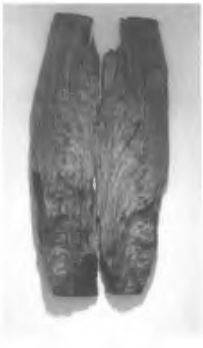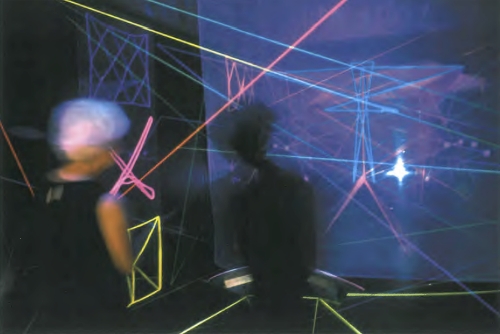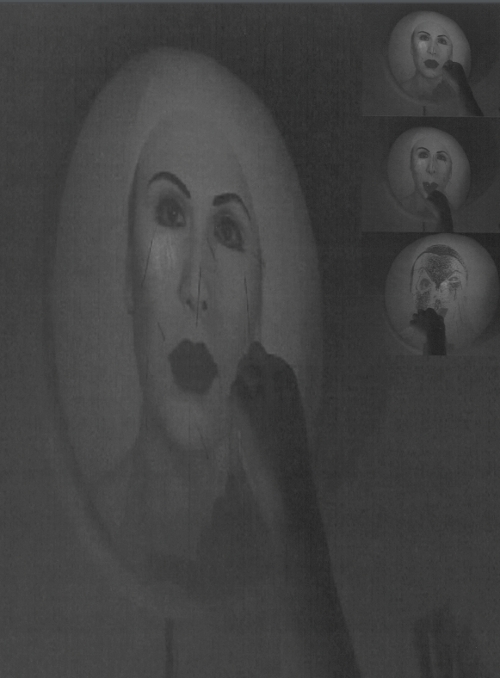
Howard Taylor 1918 - 2001 WA Howard Taylor, a painter and sculptor of the natural sublime - austere, and mostly abstract - died in Perth on 19 July 2001, aged 82, working to the end. Bruce James in 1999, reviewing an exhibition, considered that after the death of the very different and very erratic Arthur Boyd, he was Australia's best living artist.
Too little known outside Western Australia, he was adored there. The Art Gallery of WA owns 281 works (216 being his sculpture maquettes, given by the artist), the Holmes à Court collection 33, and Kerry Stokes ten. Magda and Douglas Sheerer in 1995 built beautiful new premises for their Galerie Düsseldorf, better to display his light-and-space-hungry installations. In 1989 Parliament House, Perth, commissioned a major wood sculpture as a gift for New Parliament House, Canberra. In 1998 he was designated a State Living Treasure.
His stature had been fully revealed in 1985 by curator Gary Dufour’s major retrospective at the Art Gallery of WA. The Australia Council’s Visual Arts Board promptly created its Emeritus Awards for inadequately-appreciated senior artists, and gave the first to Howard Taylor. There were 30 solo exhibitions 1949–2000, 46 group exhibitions 1949–2001, fourteen major public art commissions 1960–89 (which kept him away from exhibition work in the 60s and 70s) and constant part-time art-teaching, 1951–70, at night classes to keep his days free for art-making.
Phenomena: New painting in Australia 1, at the Art Gallery of NSW when he died, positioned Taylor as Australia’s best abstract painter for 2001, the touchstone for a moment when both abstract art and the medium of painting seemed to curator Michael Wardell to be re-entering avant-garde practice. Benjamin Genocchio raved; beyond super-subtle abstraction there was "masterful interpretation of landscape... real emotion, mystery... climactic ecstasy".
Only two solo shows were away from hometown Perth. Annandale Galleries, Sydney, 1999, produced Bruce James’s highest evaluation. In 1978 at Coventry, Sydney, the other was organised by British painter Bridget Riley, one of many fellow-artist enthusiasts. The quiet paintings and columnar wood sculptures were reviewed by Nancy Borlase under the heading 'The mystic West’. He resisted talk about the mystic or the spiritual. Instead he spoke of scientific optical phenomena: after-images, halation, reversal, spinning, glare. Only grudgingly, deep inside Ted Snell’s 1995 book Howard Taylor: Forest Figure, after insisting his art “is the result of practical procedures” Taylor conceded that “when not this, [it] is simply the old fumble... The more intangible aspects are not encouraged... suspect - known [but] kept quiet”.
Childhood was in Adelaide; the boy of thirteen disapproved of his father who had trained as an architect, going west in 1932 and going spiritual, as a minister of religion in Perth. Young Howard liked intricate machinery, made model aircraft, and enlisted in the Royal Australian Air Force in 1937. Graduating top of his class, he was transferred to Britain, shot down in 1940 over Europe, and spent five years incarcerated in German camps. To fill the days he made life-drawings of his fellow-prisoners, and the extremely sight-conscious airman started turning into an artist of intensely place-based visuality.
The modest bush at Bickley, outside Perth, entered his art from 1949, which is when he returned from post-war study at the Birmingham College of Art. In 1967 he shifted 400 km to a more extraordinary place, living at Northcliffe in giant karri-forest country, but only a short drive from wild, bald granite coastland facing the Southern Ocean, and a sometimes sinister sun.
In England he had been aware of the best painter of the time, Paul Nash, and his sacred-grove landscapes. Taylor’s Australian art parallels Nash’s but is more interesting; it embraces the figure. For example, in the painting Double self-portrait, 1959, arms are raised to become aircraft wings, shirt stretched to become tree-trunk woodgrain while an eye framed by fingers forcibly emphasises that works of art, or trees, might look back and scrutinise us, on their terms. Forest figure, 1977, repeats the theme in a wall-hung painted sculpture: a red-veined green tree yearns to be human, and then to fly. Weathered jarrah, 1998, a bilateral pair of found-object timbers, further revisits the theme of a winged forest-figure. Maybe not Christian-religious for his father, Taylor’s art swells with feeling for the sacredness of nature - extreme particularity of place signifying the universe - and for the necessity of devotional, daily work in an artist’s studio.












